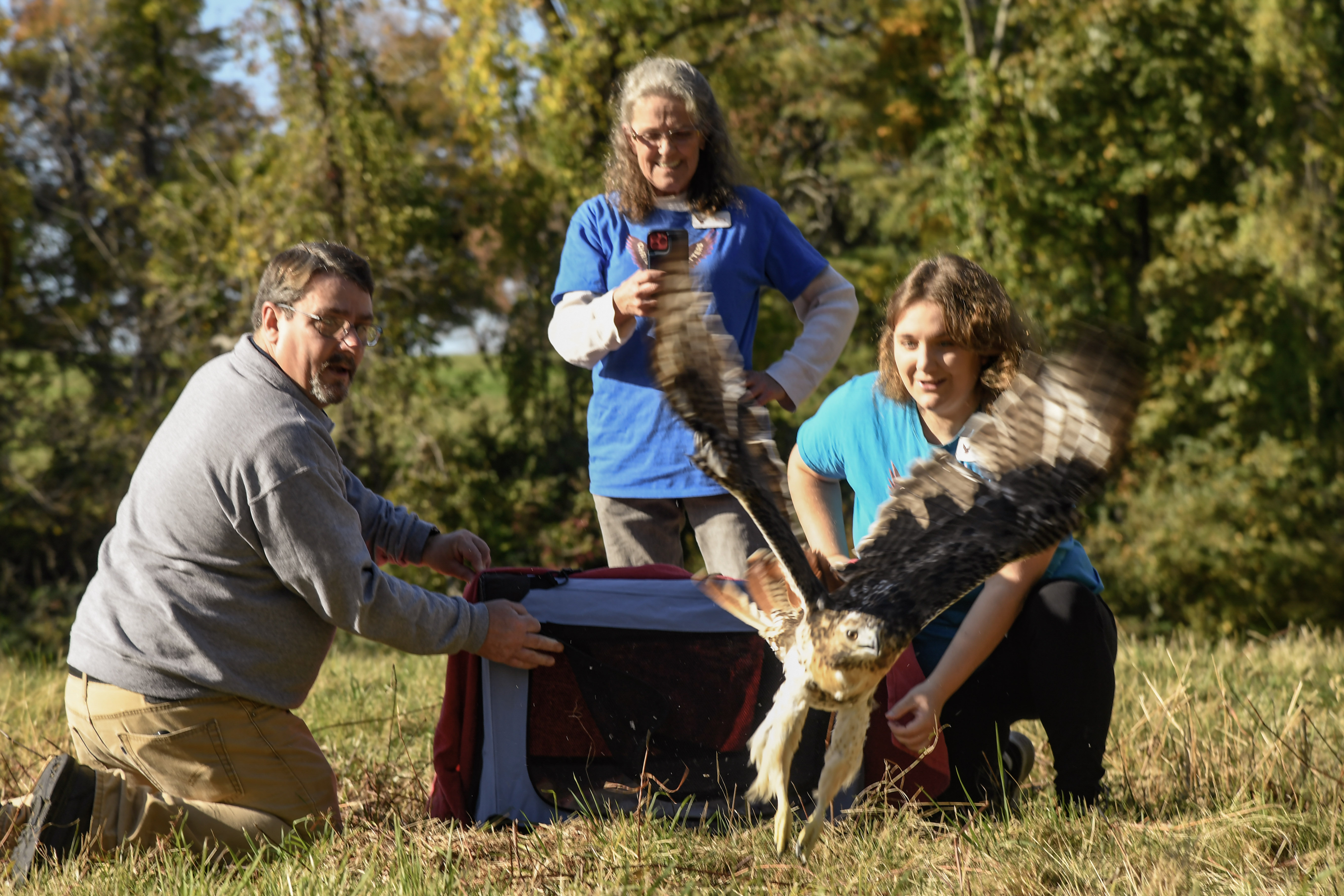Red-Tailed Hawk Released After Five Months of Rehabilitation at Nearby Animal Care Facility
View Video of Red-Tailed Hawk Being Released Back Into the Wild
View Video From Today’s News Conference
View Photos of News Conference and Hawk Release
Metro-North Railroad today celebrated the release of a red-tailed hawk that had been saved by a quick-thinking Metro-North locomotive engineer and pair of MTA police officers. On Thursday, Oct. 21 the hawk was released back into the wild at Brinckerhoff Nature Preserve in Redding, CT.
“This story embodies the spirit of the Metro-North family,” said Catherine Rinaldi, President of Metro-North Railroad. “It is thanks to the immediate action of these three men that this hawk is alive and back in the wild. We hope this celebration shows our appreciation for their efforts.”
“For me to watch this bird fly away today was incredible,” said Larry Allain, Metro-North Locomotive Engineer. “I was operating a passenger train full of people and, and I saw something large it almost looked like a chicken. So I slowly brought the train to a stop within probably a foot of it, and I got down and I knew that it was obviously something wasn't right. It was looking up at me but it wasn't moving. So I climbed back up, got on the radio with the Operations Control Center, and then MTA PD responded.”
When we heard of this bird that had been hit by a train, we knew that we wanted to help,” said Christine Peyreigne, Founder of Christine’s Critters. “And I just want to say that it's thanks to Larry stopping the train that this bird was able to be rehabilitated. We can't do our job as rehabilitators if it weren't for kindhearted people that stopped their car or in this case, stopped the train.”
On May 11, Larry Allain was operating a Danbury Branch train when he thought he spotted a large bird on the tracks. As Allain, a bird enthusiast himself, safely slowed the train, he realized the bird was a red-tailed hawk that was injured and apparently unable to fly off the tracks. Allain stopped the train inches from the injured hawk. Once off the train, Allain got down on his stomach and tapped his hands on the front of the train, attempting to get the hawk to move. The hawk eventually moved away from the tracks, but could not fly away.
As Allain reboarded the train, he notified a rail traffic controller, at Metro-North's Operations Control Center, who contacted the MTAPD Stamford District office. Sgt. Anthony Ferrara and Officer Roman Somko responded and found the hawk lying on its side. Somko was able to safely remove the hawk from the track area and place the hawk in his vehicle.
The officers contacted Stamford Animal Control (SAC) who took the hawk to the SAC facility. The hawk was then taken to South Wilton Veterinary Group for x-rays that revealed a fracture in the ulna of the hawk’s left wing. Doctors believed surgery would not be required and that the fracture would heal naturally. The hawk was then transferred to Christine’s Critters in Weston, CT to begin its rehabilitation on May 12.
The hawk spent the past five months at Christine’s Critters healing and maturing. When the hawk was spotted by Allain it was still a juvenile. Since then, the hawk’s left wing has healed completely, its red tail has fully grown, and the now adult hawk has a good prognosis going forward. The bird took flight back into the wild, far away from any trains, the morning of Oct. 21.
About Christine’s Critters
Christine’s Critters, Inc. is a non-profit 501(c)(3) created in 2015 by Christine Peyreigne whose mission is to rescue, rehabilitate and release as many injured birds of prey as they are able to handle. Christine’s Critters relies totally on donations and program fees to care for 23 permanent resident birds of prey, 30 reptiles, and the 250 or more birds that are admitted into rehab each year.
